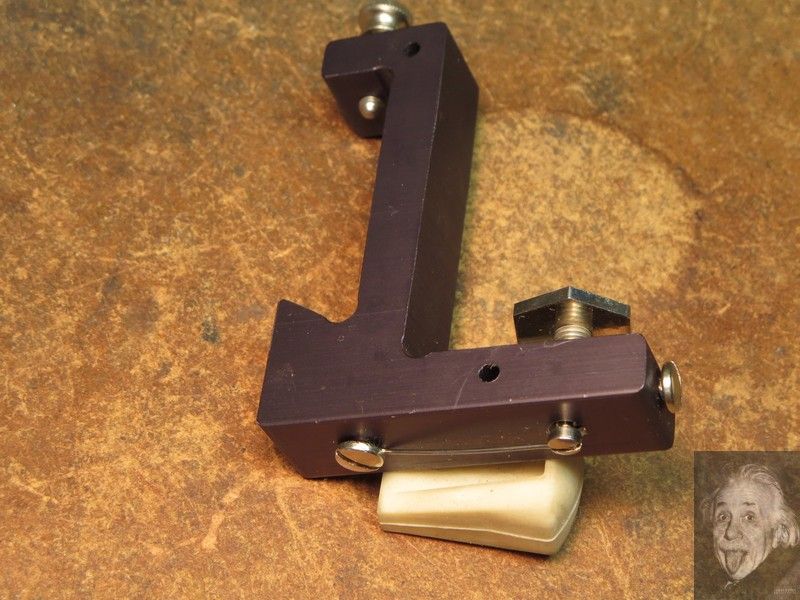My venerable Unimat has been converted into a decicated precision drill press/mill. I thought a review of what I did might serve to give some other folks ideas about what they can do to these clever little machines...
Here's an overall shot of the machine...
I mounted a fixture bar (the black bar screwed to the wooden base) so I would have a place to attach various accessories. Attached to this bar on the right is a movable aluminum block that holds a 2" DI that bears against the carriage and measures actual carriage motion (the handwheel calibrations are metric so this eliminates the need to convert).
On the left another movable aluminum bracket arrangement holds a 1" DI bearing on an aluminum false jaw that I added to the stock Unimat vise to measure infeed. Yes, I know that extended jaw could get in the way on certain types of parts. So far it hasn't caused me grief. When it does I'll cook up some other kludge to replace it.
The false jaw on the vise has a visible hole in it. It is located a known distance from the edge of the jaw so it can be used for locating. Because of the tiny amount of quill motion available, you can't use a conventional edge finder. In front of the black fixture bar you'll see a 1/4" bar with a precision point turned on the end and a precision 0.2" section turned on the other end. This bar can be slid into the spindle from the pulley end and out through the chuck, clamped in place, and, in conjunction with the precision hole in the vise jaw, allow all sorts of alignment trickery.
With a short quill throw, tool changing is a problem because the Unimat is a round column device - loosening the head to raise/lower it loses all registration. To deal with this I do most of the tool changes through the pulley end of the spindle. In front of the alignment rod is another rod fitted with a magnet in a brass holder on its right end. Slide this down the spindle, loosen the chuck and the magnet grabs the tool and pulls it out through the spindle. Reverse the process to install another tool.
Tools that won't fit through the spindle hole are dealt with differently but that situation doesn't arise very often for me. I'm mostly using tiny mills and drills.
The quill motion is measured as follows...
A bracket attached to the top of the Unimat column holds a DI that bears on a square aluminum tube that is secured to the aluminum pulley bracket. This latter piece is firmly screwed to the motor head so when the quill moves the spindle up and down the motion is directly communicated to this DI.
Attaching this square tube to the bracket without making any holes in the Unimat (I had planned to sell it and wanted to keep it pristine) involved making some tiny brass clamps that were screwed to the tube.
A further annoyance with the Unimat is the fact that when you loosen the clamp bolt that secures the power head to the round column, the head wants to slide down when all you want is to rotate it. It's also depressingly easy to let the head drop and smash a delicate mounted drill or mill into the workpiece.
To forestall this, I built a separate clamp. When it's locked in place the head clamp can be loosened and the head rotated with out dropping. It also serves as a safety to prevent unwanted head drops.
To lock the head in position vertically, one must tighten one of two SHCS in the head with a longish hex wrench. This is annoying and awkward. I removed one of the two screws and replaced it with an extended screw that can be operated without a wrench.
All these improvements have made the tool a real pleasure to use. So much so, in fact, that I've given up on the notion of selling it. It doesn't take much space and has a much higher top speed than my mill.



 LinkBack URL
LinkBack URL About LinkBacks
About LinkBacks







 Reply With Quote
Reply With Quote







Bookmarks